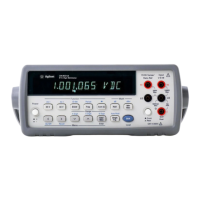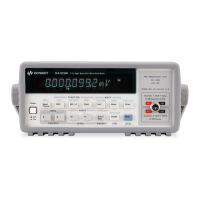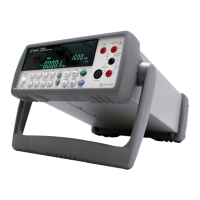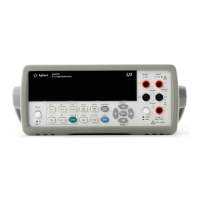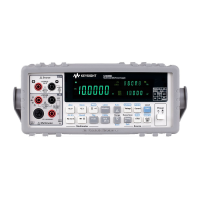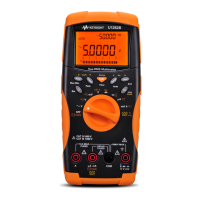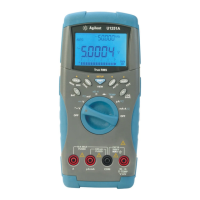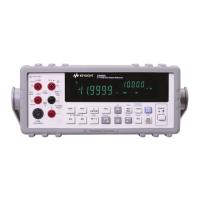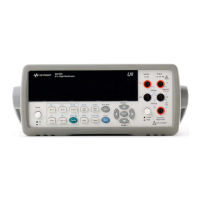Appendix D Optimizing Throughout and Reading Rate 325
If NPLC is in the interval from 1 to 10, inclusive, then the NPLC is rounded up
to the next integer. If NPLC > 10, then the actual value of NPLC is rounded up
to the next integer multiple of 10. For values of NPLC <1, the value selected is
used much the same as aperture except that the integration period is scaled in terms
of the line frequency. For example, if the value selected for NPLC is .1 PLC, the
3458A actually sets the integration period to .1X (line period to the nearest 100
ns> or .0016666s (60 Hz operation). The query NPLC? returns 99.9958E-3 PLC.
If the value of 2.5 is selected for NPLC, then the 3458A sets the integration period
to 3 PLC. If the value of 21 is selected for NPLC, then the integration period is
set to 30 PLC. NPLC 0 always selects the shortest integration period possible, 500
ns or 29.99994E-6 PLC(60 HZ operation).
Another command that affects the integration period is the resolution command,
RES, which selects the number of digits of the reading displayed as a function of
a percentage of the maximum input parameter. The resolution of the measurement
is selected as a part of the function command or as the RES command. It sets the
integration period to a value that will allow the ADC to convert the measurement
to the resolution requested.
For example,
DCV,20,.001 !(using the resolution parameter of this command)
Figure 44. Shows the
dependency of accuracy,
reading rate, resolution,
and noise on aperture
or NPLC selected.
Table 30: Integration time and query response.
Command Integration Time
(APER)
Query Response (NPLC?)
50 Hz 60 Hz 50 Hz 60 Hz
NPLC0 500 ns 500 ns 25 E-6 29.99994 E-6
NPLC.5 10ms 8.333 ms 500 E-3 499.99700 E-3
NPLC 1 20 ms 16.6667 ms 1 1
NPLC10 200 ms 166.667 ms 10 10
NPLC 11
*
200 ms 166.667 ms 20 20
*For NPLC > 10, the continuous integration period is equal to the
integration period ofNPLC 10, but more than one reading is taken.
The resulting average is output to the display or to the GPIB
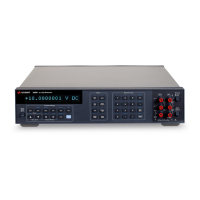
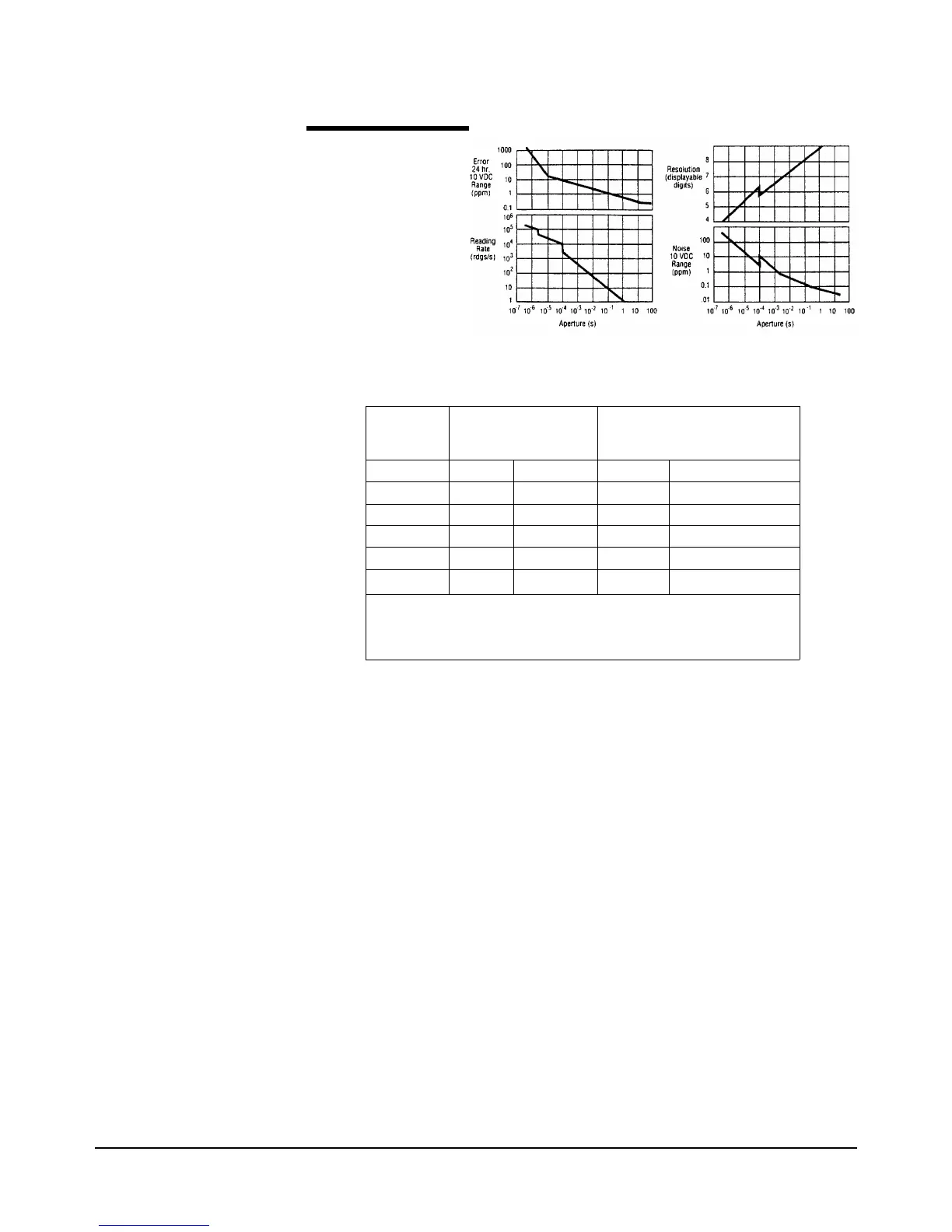